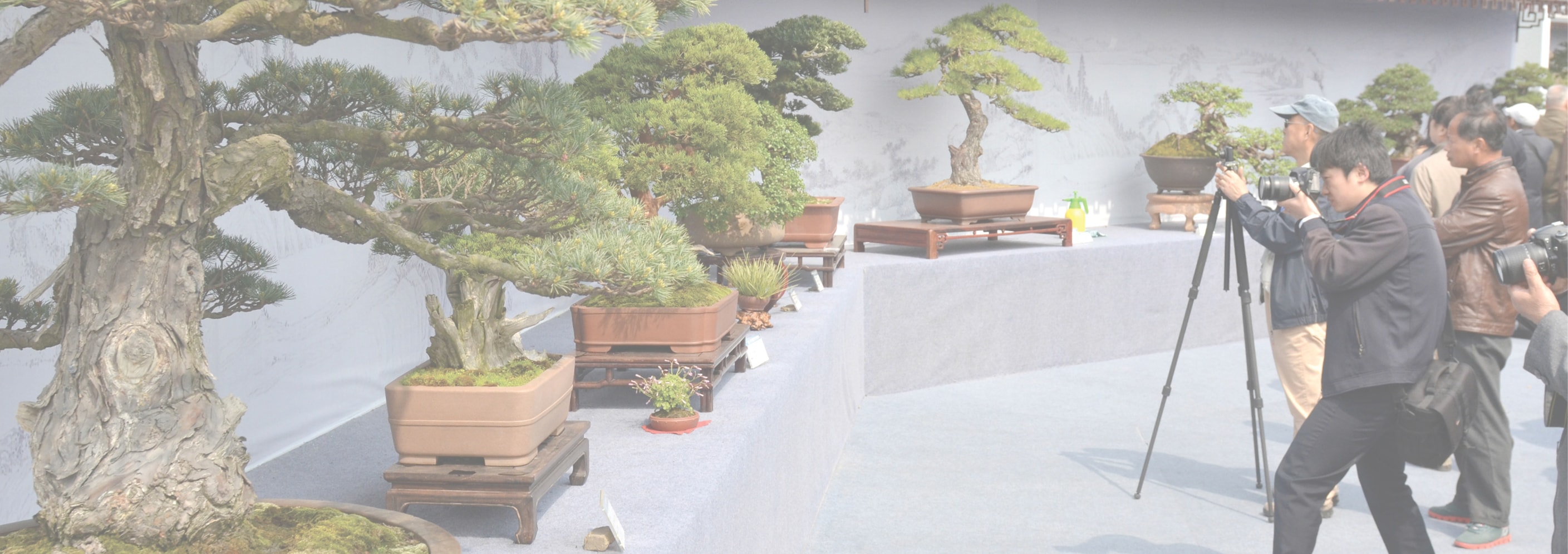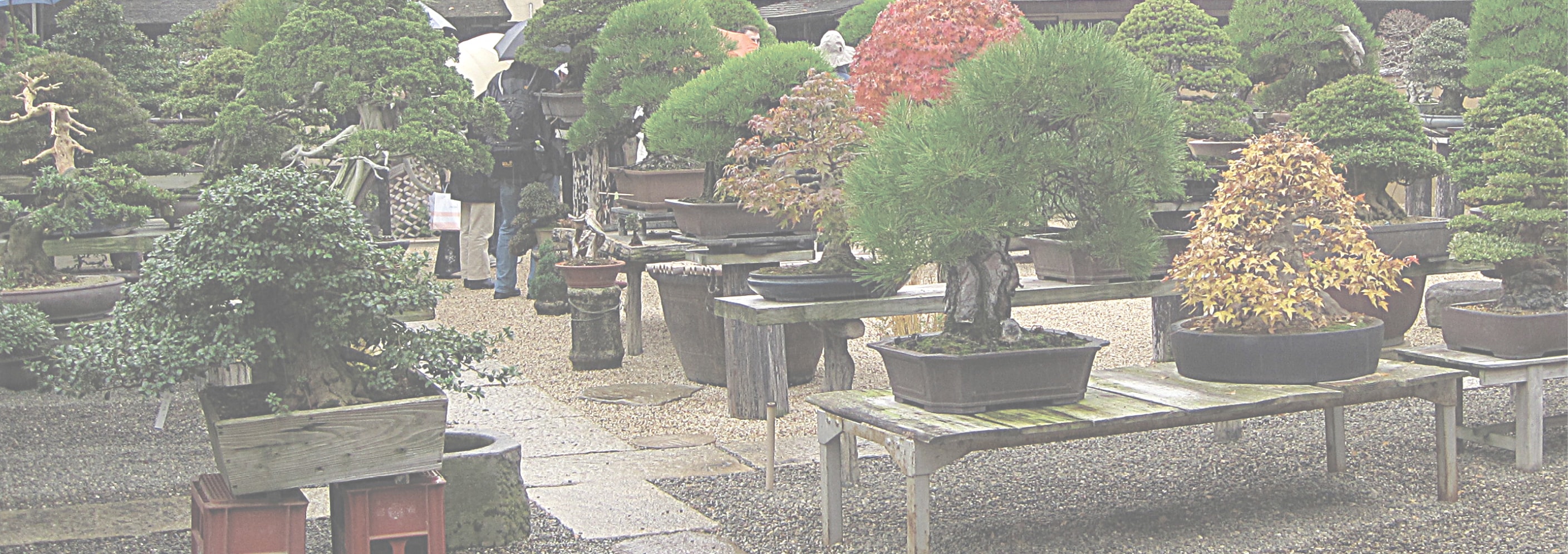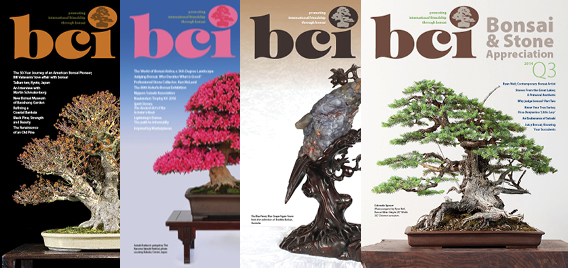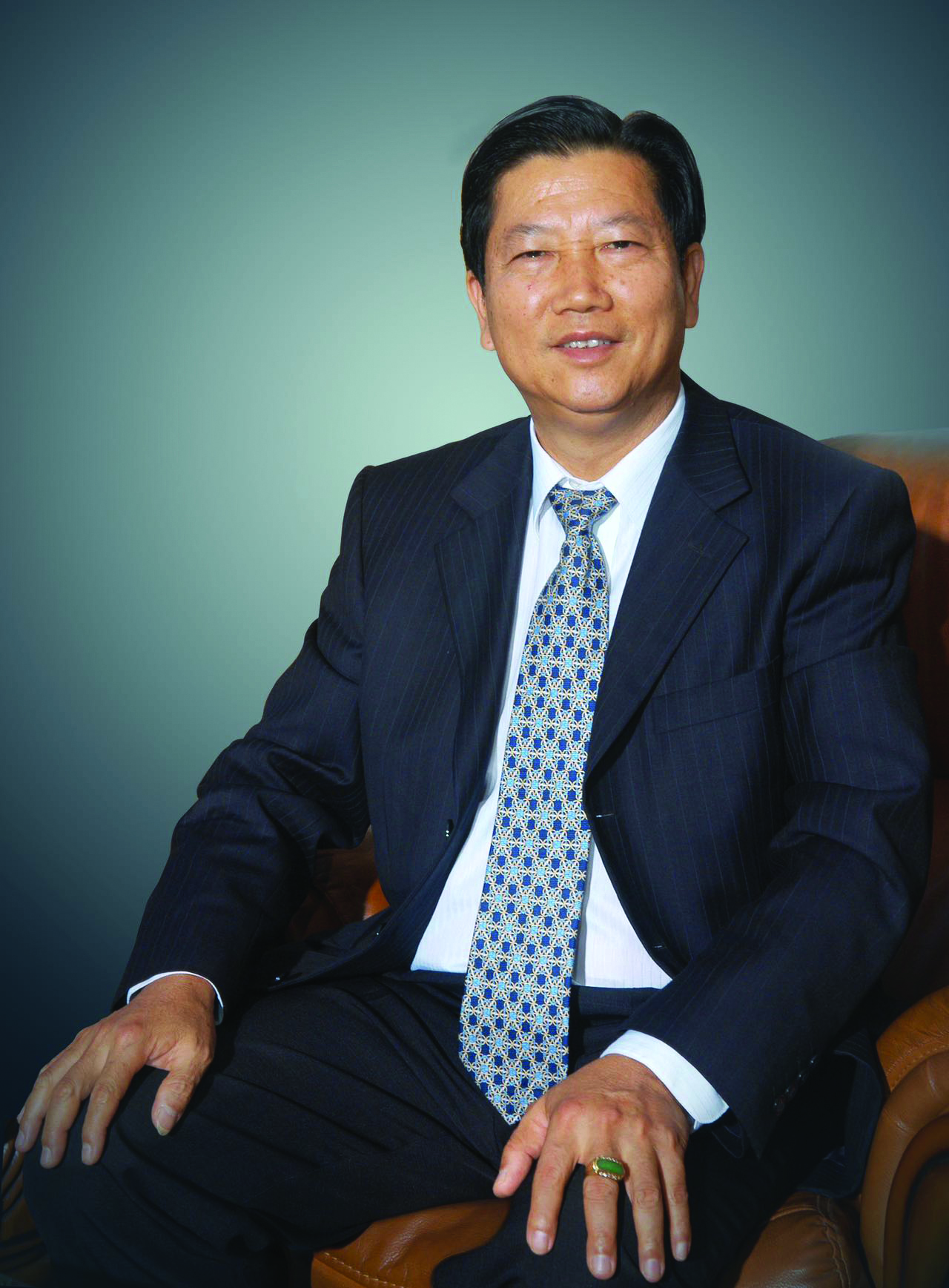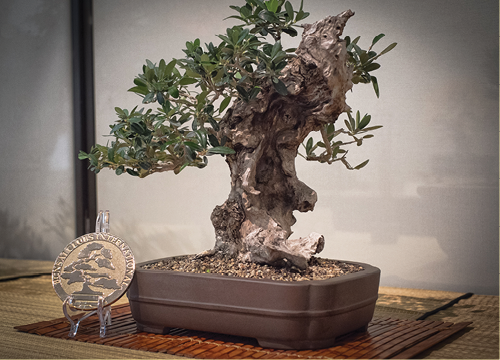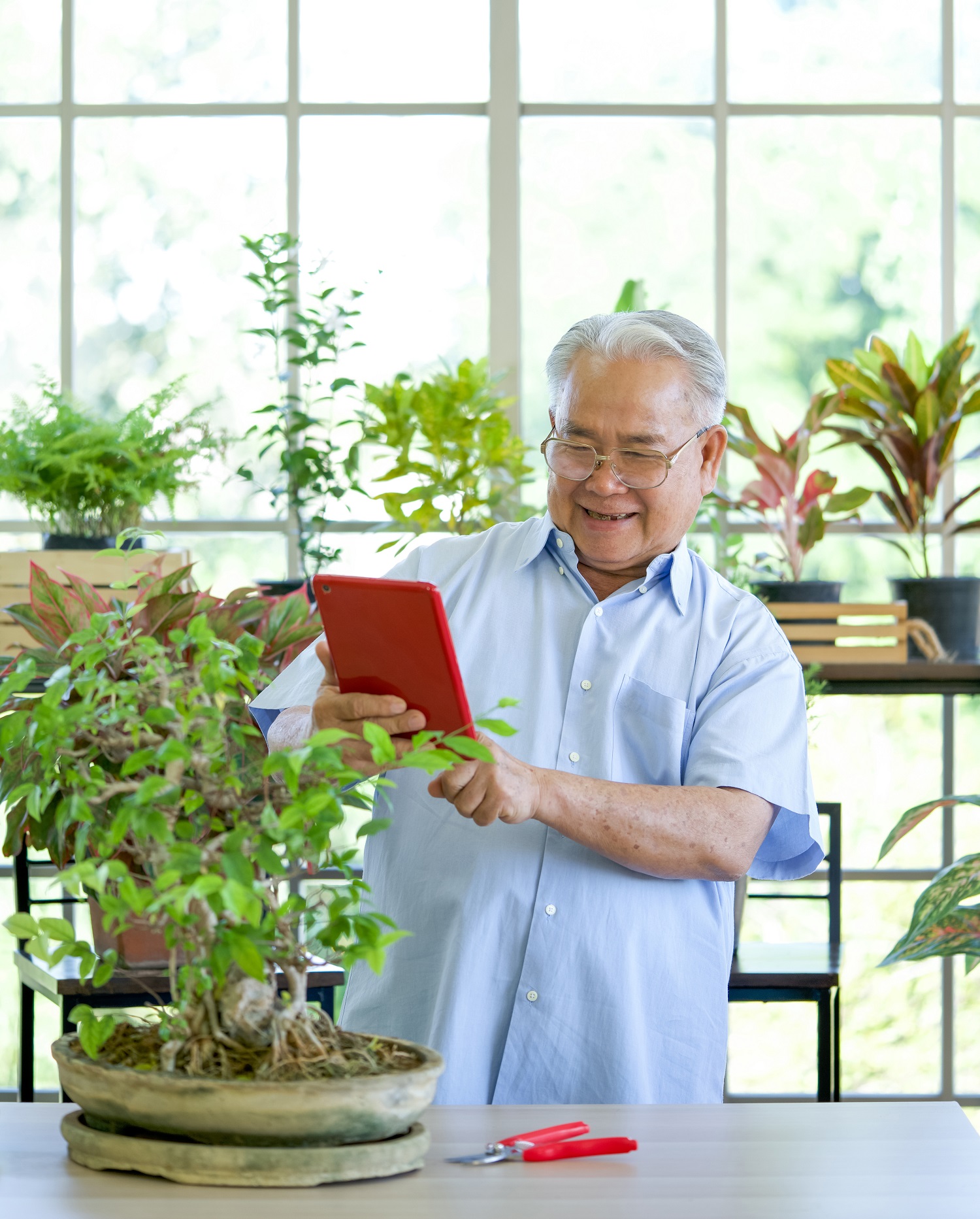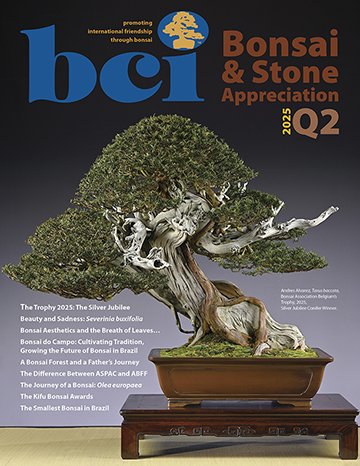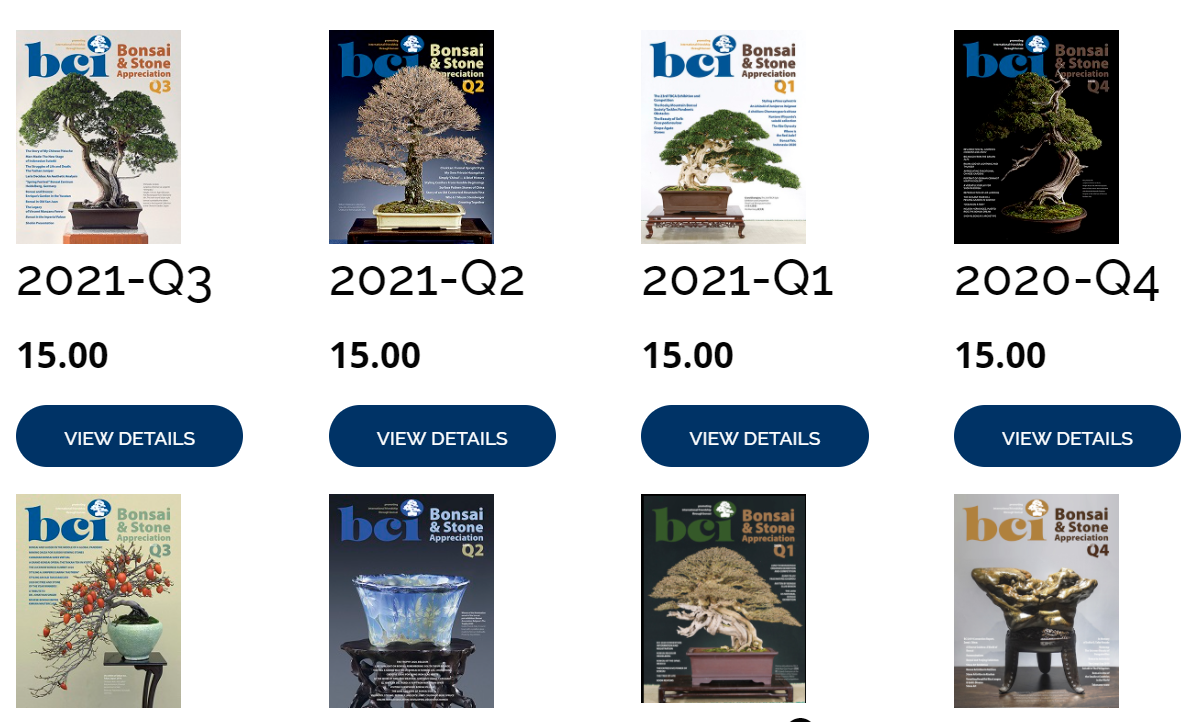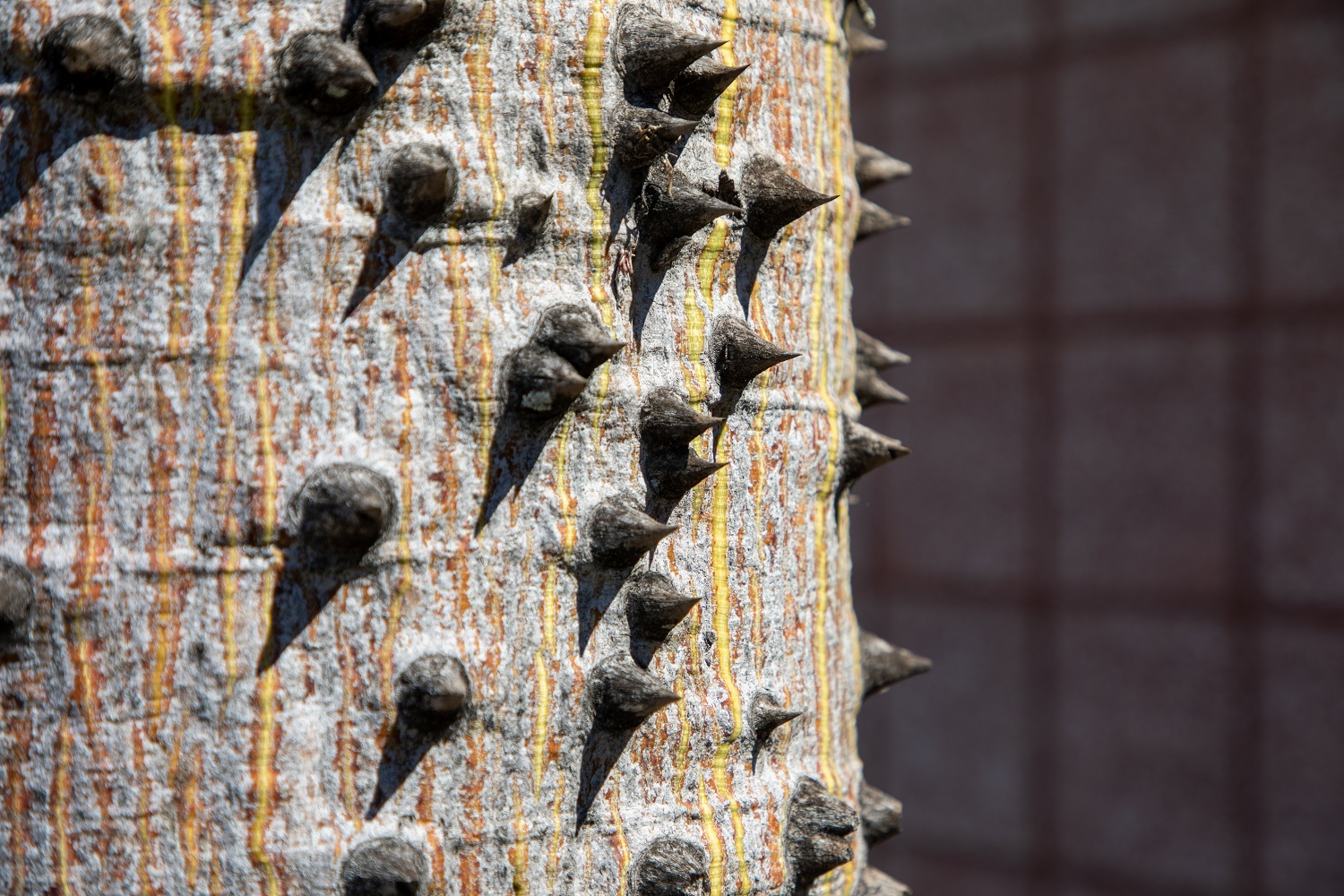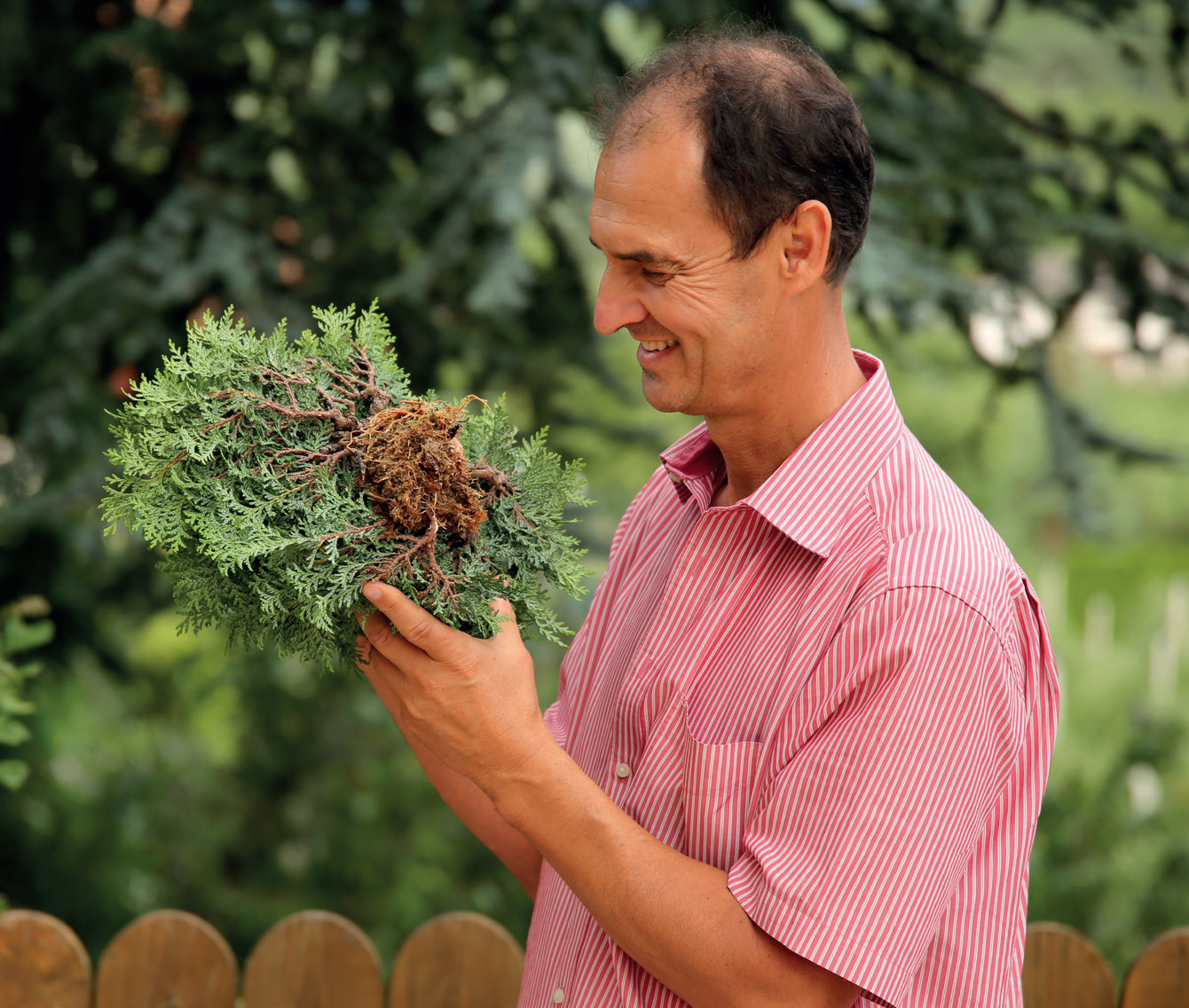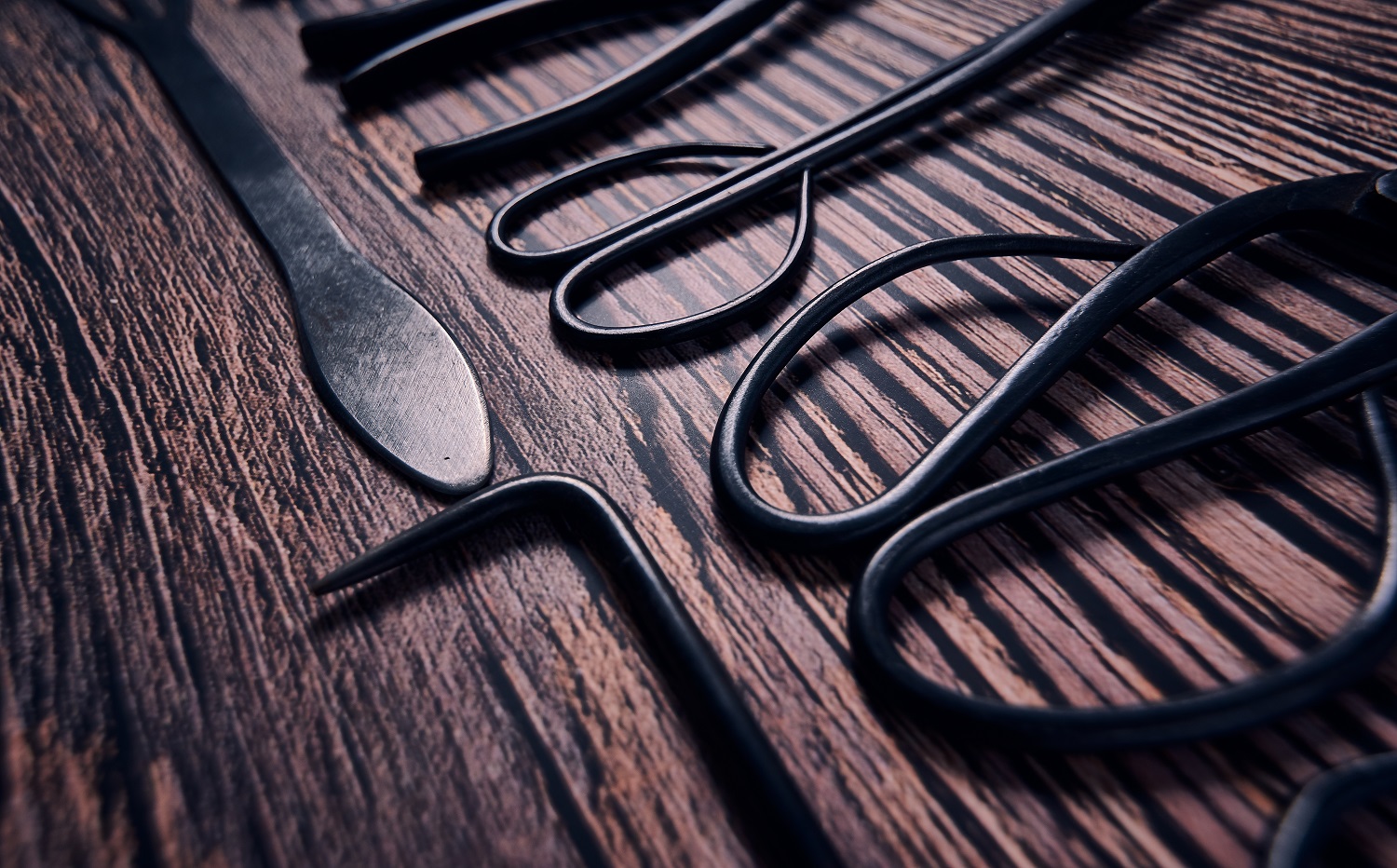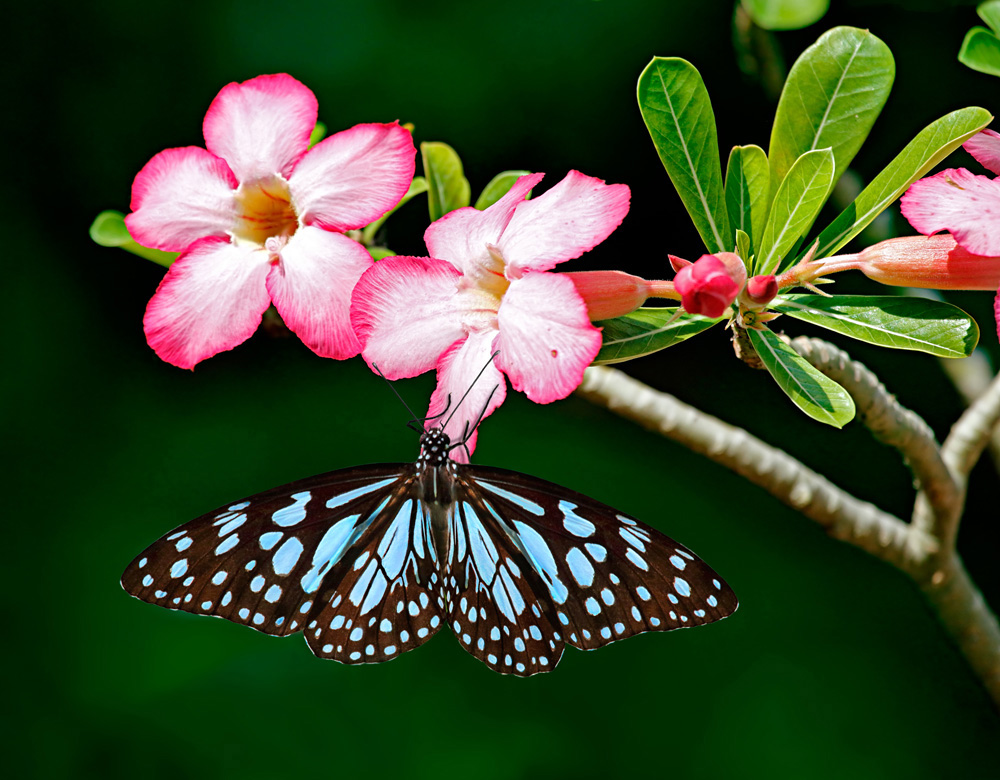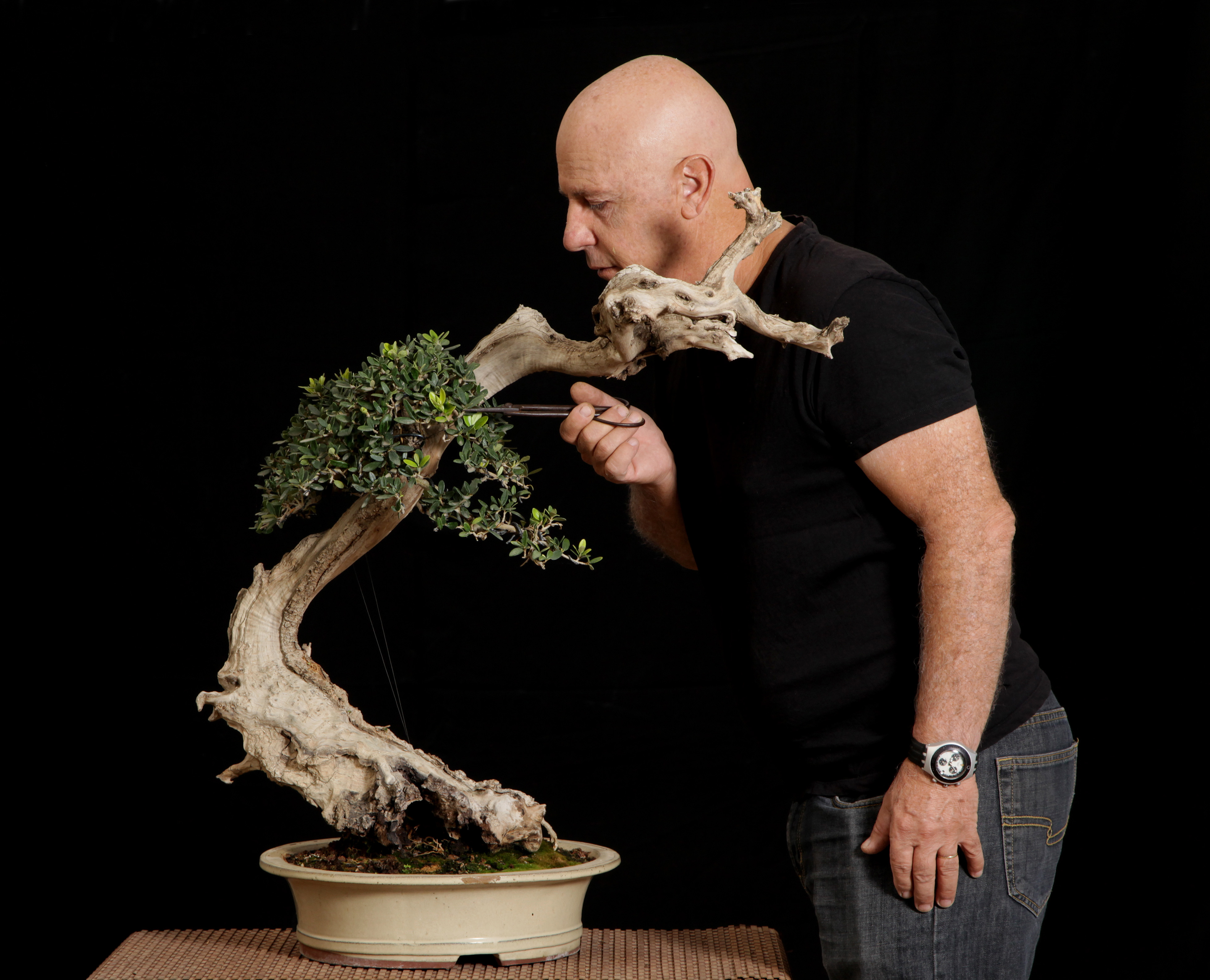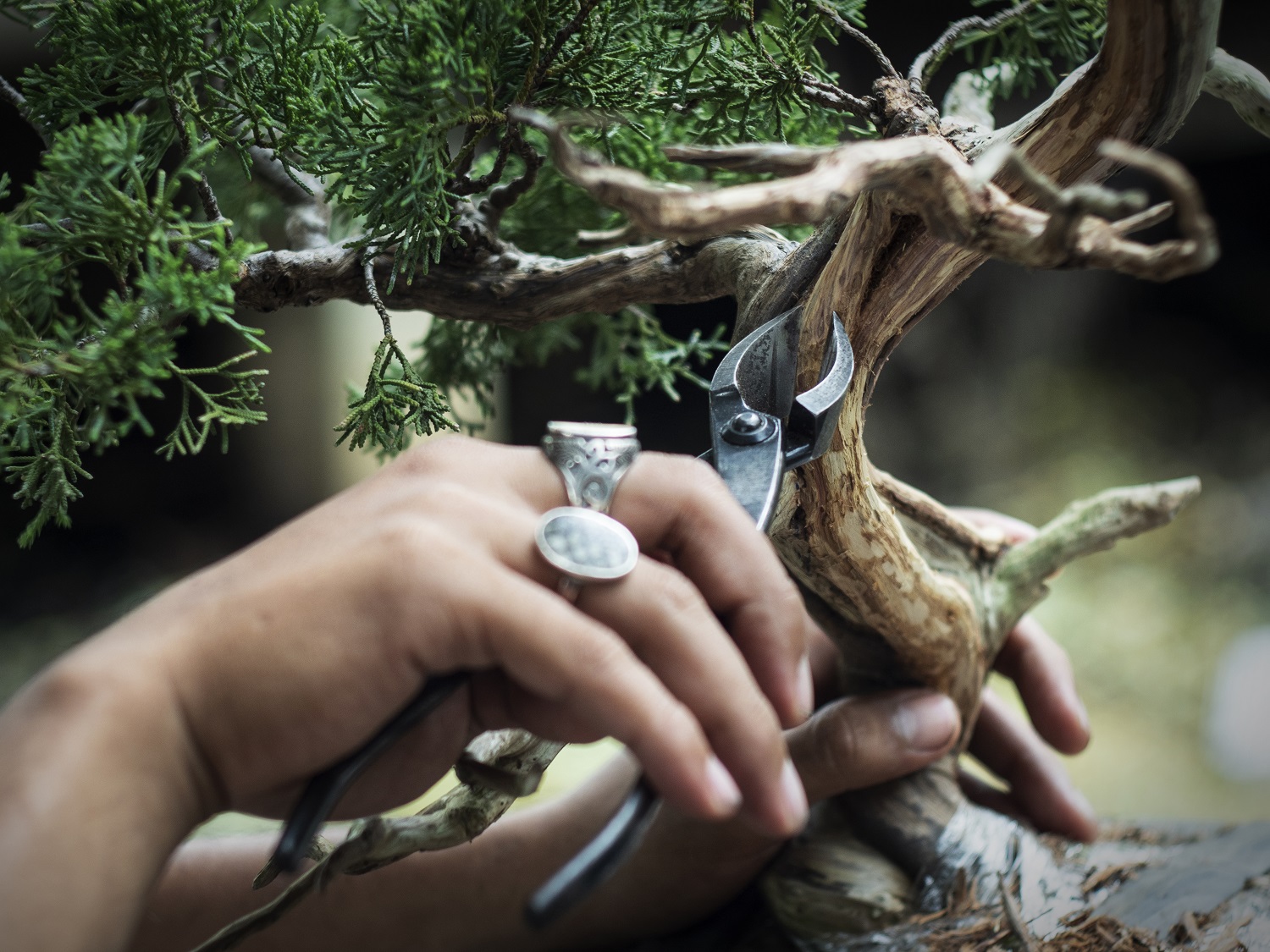About Q4 2023
In this edition of BCI Magazine, we are on the cusp of the Annual BCI International Convention, where most BCI Executives and Directors have gathered in Shuyang, China. The host of this grand event is Mr. Chen Chang, the distinguished General Director of the Flower Bonsai & Suiseki Branch of the Chinese Society of Landscape Architecture, the Director of Bonsai Clubs International (BCI), China Region, and the Director of the World Bonsai Friendship Federation, China Region. He has been instrumental in advancing the art of penjing and bonsai in China and beyond. An emblem of his passion for this art form is his sprawling Baowen Garden, home to over 5,000 trees. The BCI Convention, a showcase of 1,300 bonsai and Penjing exhibits, is a testament to the global impact of this art. Watch for a full report in this magazine’s Q1, 2024 edition and on the BCI website.
.

Basics of Design
Informal Upright
by Lew Buller
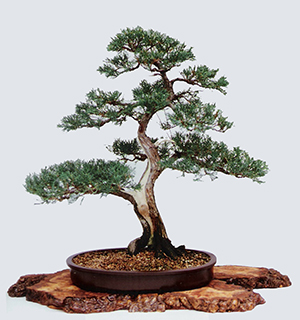
There is only one formal upright in my collection, and that’s my bald cypress.
A formal upright requires a perfectly straight trunk and they are hard to come by. Consequently, most of my upright trees are of the informal style.
Know Your Tree Series
Yamadori from the Yard
Text by Lew Buller
Photos by Eitan Hagler and Lew Buller
Quite a number of bonsai artists have posted articles on collecting trees from the wild. Those of us who like our creature comforts prefer getting yamadori from our yard, or the neighbors’ yards, or somewhere close that does not require any more supplies than a shovel, a pot, and perhaps some soil and replacement plants. So it is with Buxus microphylla japonica, Japanese boxwood, used in San Diego for years.
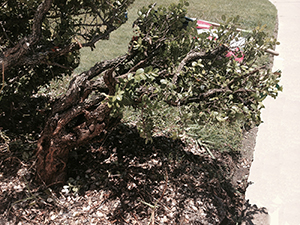
Eitan, the Apprentice, took his car up a driveway and stopped right next to this boxwood. He had asked for permission to remove the plant six months earlier and finally got it. Would you be interested in this tree if you drove by and saw it? Like all plants, it was reaching for the sun and that gave it the unusual shape.
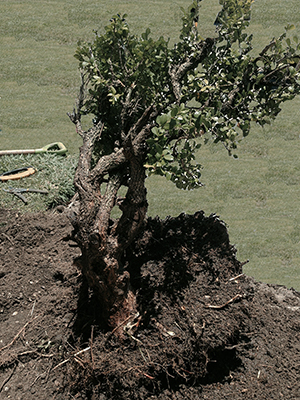
It’s hard to predict what the roots on an in-ground tree will look like. A lot of digging may result in finding roots that won’t support the tree if it is removed. In this case, you might guess the roots would be lighter on the shady side and heavier on the side reaching toward the sun. If you did, you would be right.
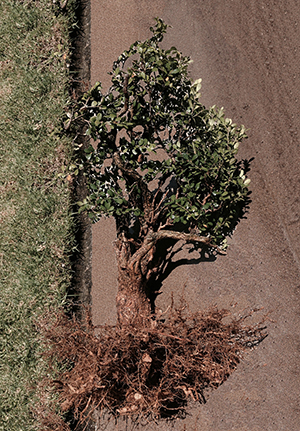
The dry soil was easy to shake off and doing that revealed bare roots. Would you trim this root ball before planting it? The need for balanced roots must be weighed against the need to retain as many roots as possible.
What about the future planting angle? If the tree were to be styled as a half-cascade, it would need more roots in back and fewer in front to fit next to the edge of a cascade pot. If it were to be developed as an informal upright, it would need roots evenly spaced all around.
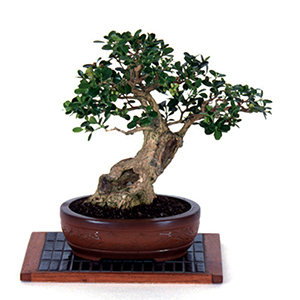
Boxwood can survive severe root pruning. The Old Man picked up this one from the side of a road in late afternoon after it had been lying there all day. The scars resulted from being dug out by gardeners. They healed over slowly. Nine inches tall from the top of the pot to the top of the tree, it is nevertheless an ordinary Japanese boxwood.
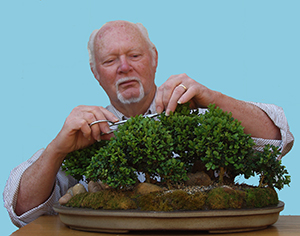
Morris Midget, 15 years old.
Varieties of the Japanese boxwood do well in the San Diego climate. The ‘Kingsville’ is the smallest I know; the ‘Morris Midget’ only slightly larger, topping out at about one foot high, the same as the ‘Compacta’. The latter two are varieties of the microphylla. All three grow so slowly that space for them is not a problem. (There is some interesting but conflicting reading on the Internet on the origin of the Kingsville and its scientific name.)
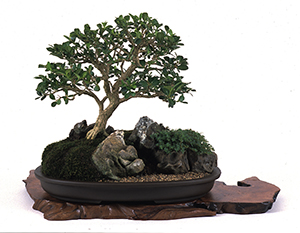
With restricted growth, microphylla can be kept small. The boxwood in this saikei was from a local nursery. Shaded under a tree and watered until the soil was mostly washed out, it was a runt when I bought it. I have managed to keep it small. The hard part is keeping moss on it.
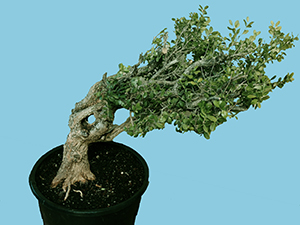
Back to the question of how to plant the yamadori. Eitan did not reduce the root ball and he chose to plant it in a position where it could become either a windswept or a half-cascade.
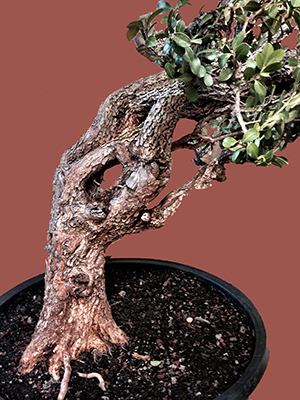
Taking a closer look at the trunk, another possibility emerges. The microphylla sprouts back readily on old wood, so it is possible to gradually force growth lower on the trunk. For those who like short, heavy-trunked trees, this would be an excellent opportunity to develop one.
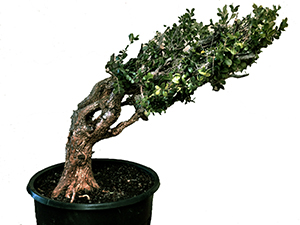
The decision for now is to keep the options open. Because of the way leaves develop on boxwood, some thought will have to be given to creating a branch structure that won’t be hidden by leaves. Taking foliage off the top and the upper end doesn’t create problems–it will grow back easily. Foliage on the bottom of the branches will grow back more slowly.
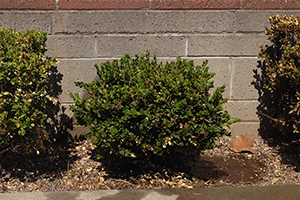
Let’s go with Eitan on another collecting adventure. This tree is another one he spotted on his rounds. Look at the two boxwoods on either side. They are dying back for lack of care. He has been watering the center one to get it ready for removal. A preliminary trimming reduced the tree down to about 16”, half its previous height. The owners were kind enough to let him use their hose, so he bare-rooted the boxwood after removing it.
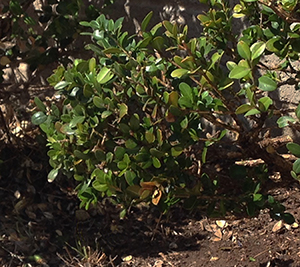
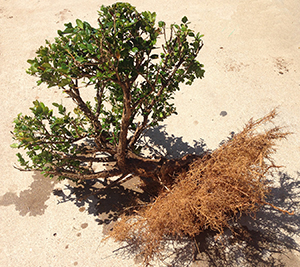
The roots are a healthy brown color; truly healthy, the roots would be a bit lighter, almost yellow. The roots were plentiful enough that the tree did not need to be wired in the pot.
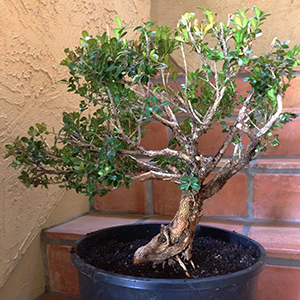
It makes no difference whether the tree suffered a drought on the side of a mountain or a drought because of a failure in the irrigation system. Growth was stunted either way. Nor does it make a difference whether the curves were the result of hugging the side of a mountain or leaning sideways to get out of the shade of a neighboring plant.

The final photo shows characteristics yamadori collectors prize. The scars slowly healing over, the dead-end root at the right where one was earlier, and the root curving over a space where a stone used to be. These things cry out “Survivor.”

